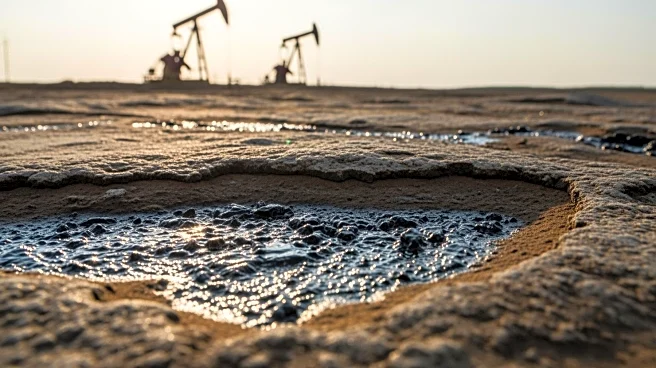What's Happening?
A fatigue crack in the Keystone Pipeline led to an oil spill in North Dakota, releasing thousands of barrels of oil onto farmland. The pipeline operator, South Bow, reported that the crack originated along
the pipe's manufactured long-seam weld. Spill-related costs are estimated at $55 million, with the company expecting to recover these through insurance. The U.S. Pipeline and Hazardous Materials Safety Administration has ordered corrective actions, and a third-party root cause analysis is pending. The spill occurred on April 8, with an estimated 3,500 barrels of oil spilled near Fort Ransom. Cleanup efforts involved vacuum trucks and over 200 workers, with nearly 90% of the spilled oil recovered.
Why It's Important?
The oil spill highlights the vulnerabilities in pipeline infrastructure and the potential environmental impact of such incidents. The financial implications are significant, with costs expected to be covered by insurance. The spill underscores the need for stringent safety measures and regular inspections to prevent future occurrences. The incident also raises concerns about the long-term environmental effects on farmland and local ecosystems. The Keystone Pipeline is a critical component of U.S. energy infrastructure, transporting crude oil from Canada to refineries in the U.S., and any disruption can have broader implications for energy supply and prices.
What's Next?
The federal government is leading the investigation into the root cause of the spill, with findings expected to inform future safety protocols and infrastructure improvements. South Bow is conducting remedial evaluations and inspections to ensure pipeline integrity. State regulators will continue to monitor the site, with vegetation recovery expected to be assessed in spring 2026. The incident may prompt increased scrutiny of pipeline safety standards and influence regulatory policies to enhance environmental protection and prevent similar spills.
Beyond the Headlines
The spill raises ethical and environmental questions about the reliance on fossil fuels and the risks associated with pipeline transportation. It highlights the need for investment in alternative energy sources and infrastructure to reduce dependency on oil. The incident may also influence public perception and policy debates around energy security and environmental sustainability, potentially accelerating the transition to cleaner energy solutions.













